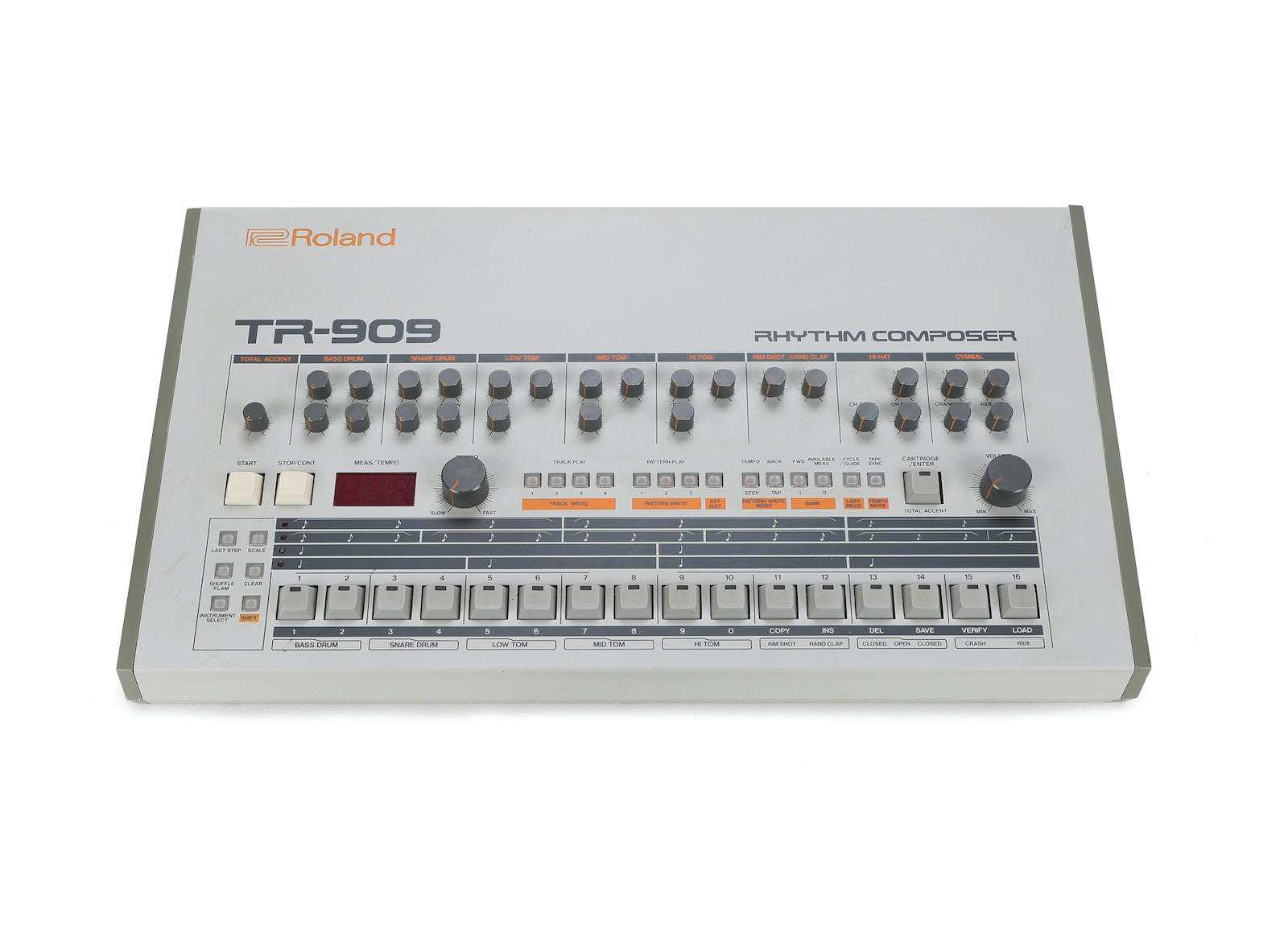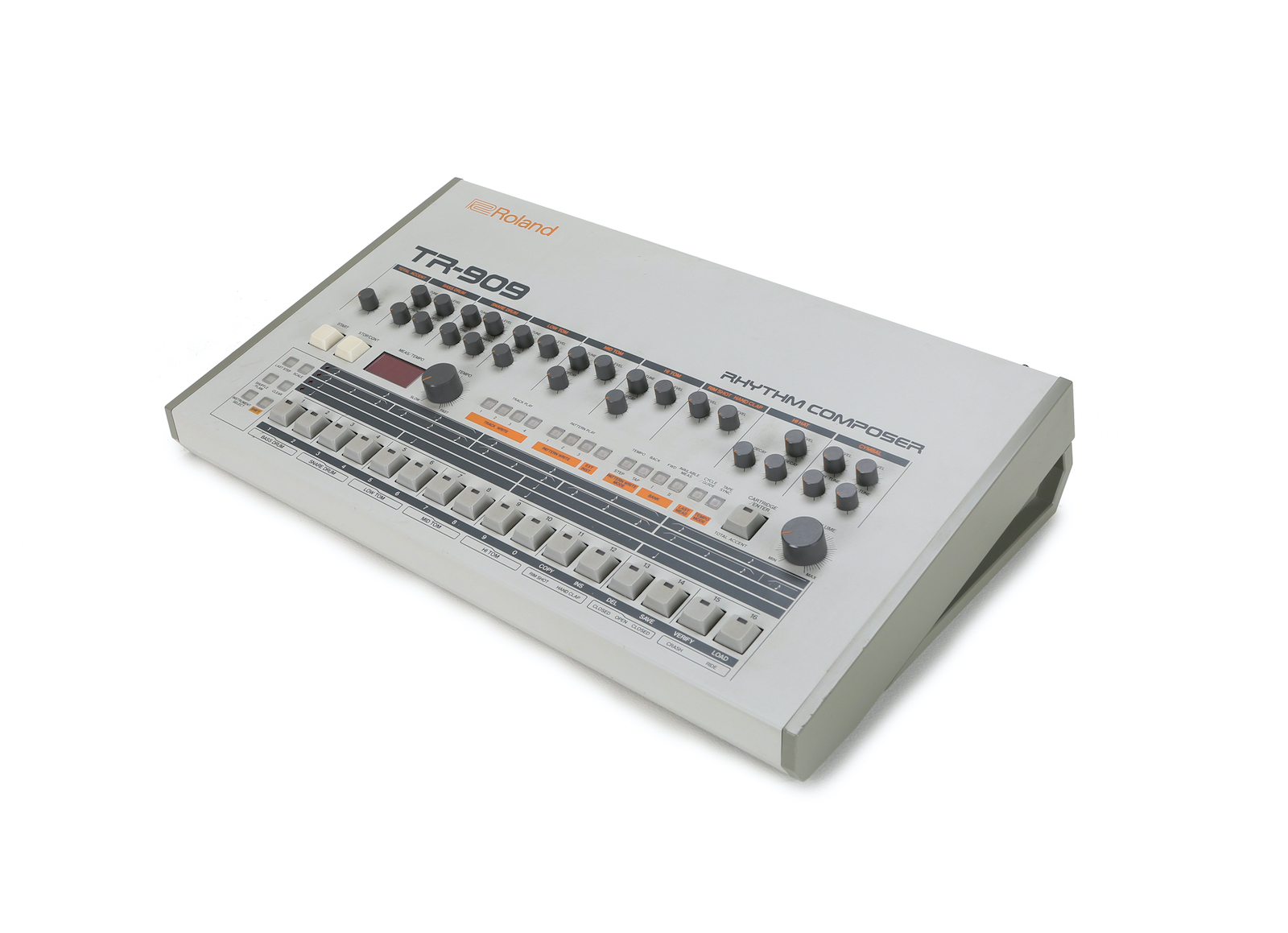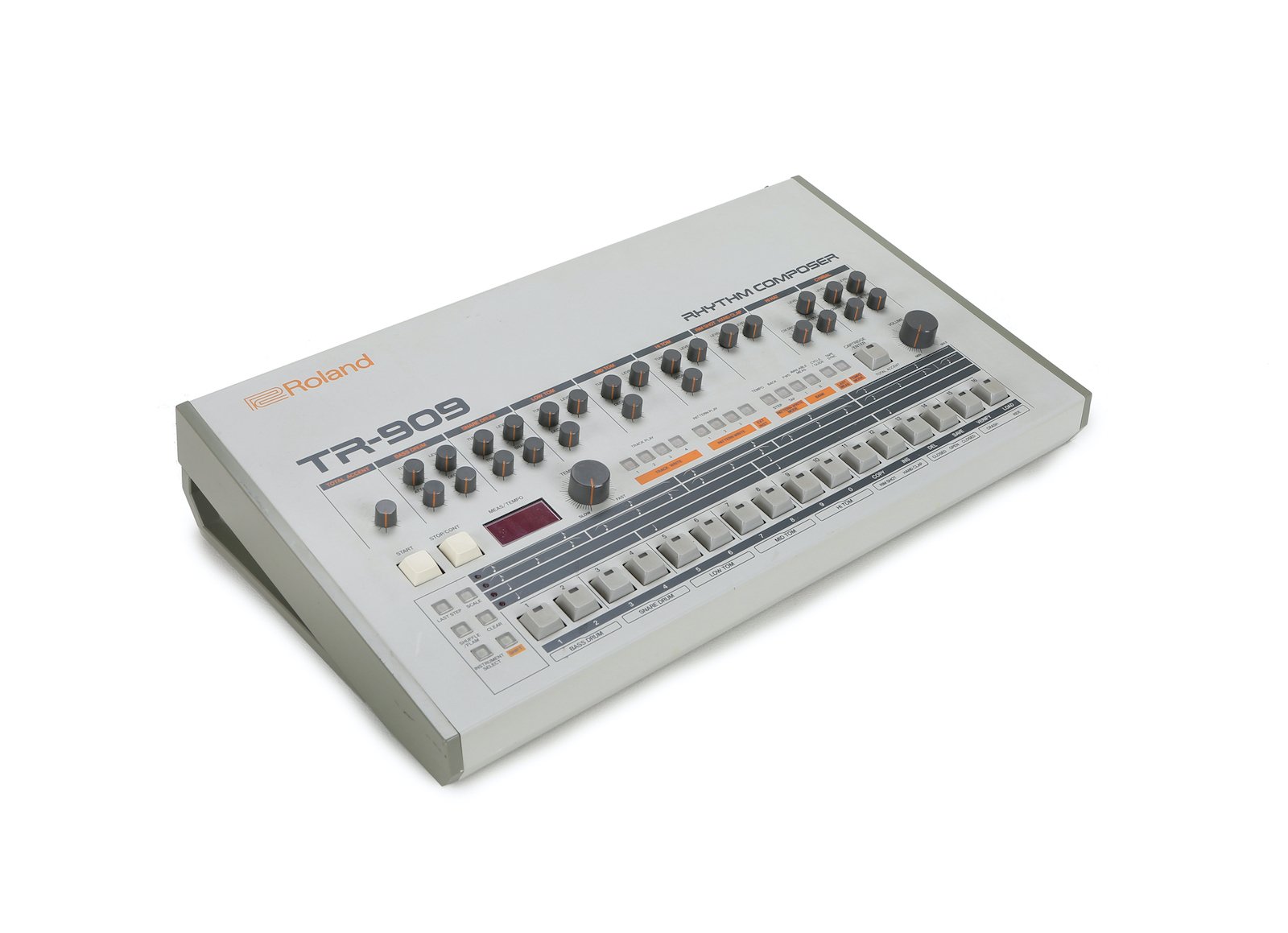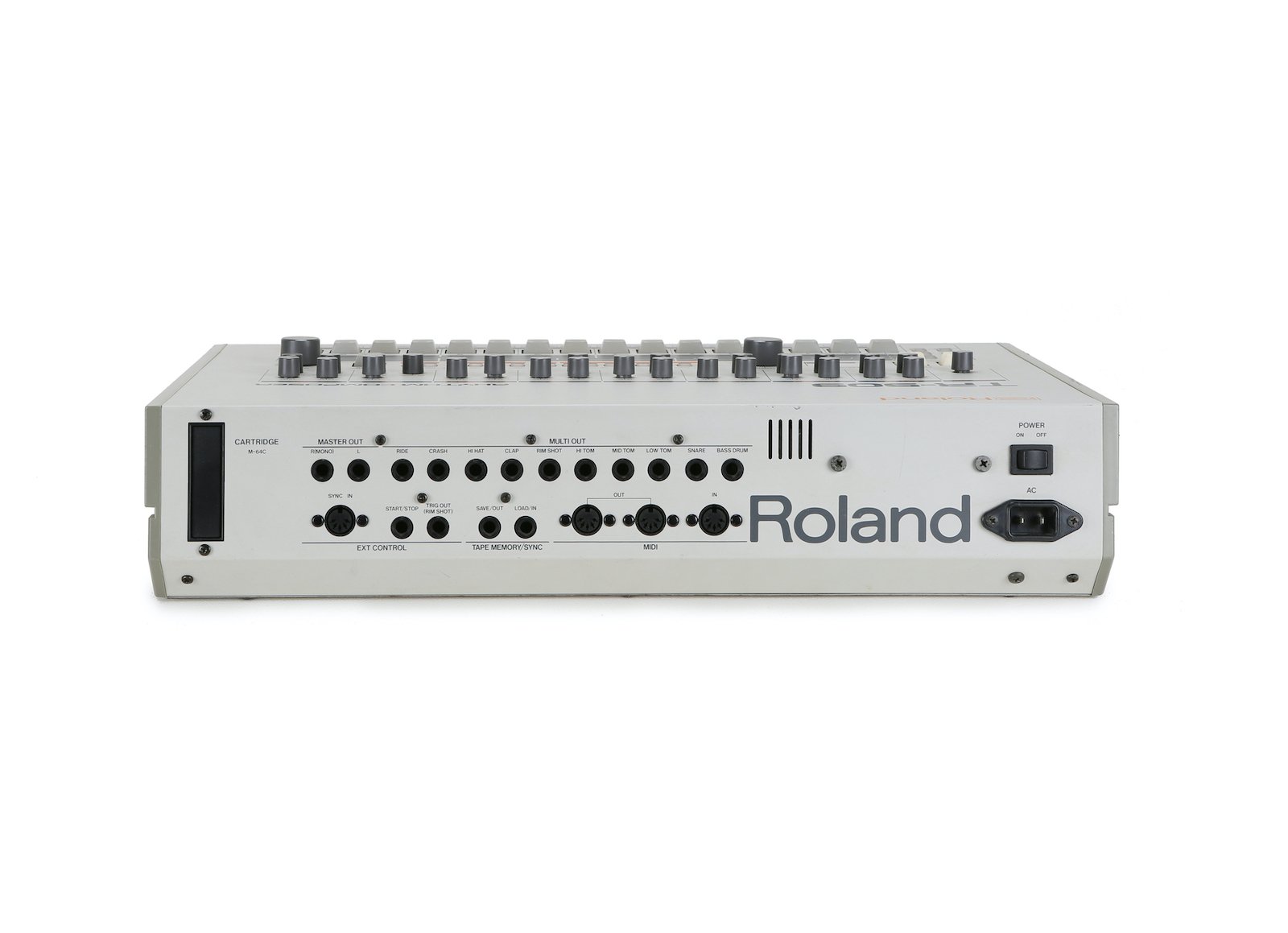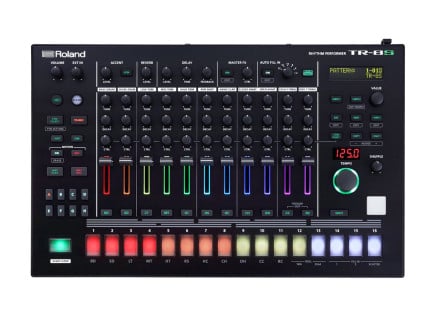From techno to pop, the TR-909’s punchy instrumentation has been deployed across countless genres. But like its older sibling, the TR-808, when the TR-909 was released in 1983, it did not immediately become a success.
In the early ’80s, the drum machine market was still dominated by outrageously expensive instruments that utilized samples, such as the LinnDrum, Oberheim DMX, and the E-mu Drumulator. Where these drum machines sounded like actual drum kits, the TR-909 was a weak synthetic version of a real drum kit.
Perhaps the first analog/digital hybrid drum machine, it combined digital samples for cymbals and hi-hats with analog circuitry for drums. Its analog construction meant that attack, tone, tuning, snap and accent were all variable. Perhaps the best asset of the TR-909 was its shuffle, which gave its patterns lifelike grooves. Also available was a preview function and a flam effect, which added grace notes to provide even more rhythmic variety. Musicians loved the ability to save and chain up to 96 patterns, for the potential to reach 896 measures. It was among the first Roland machines to be equipped with MIDI, making it possible to link multiple instruments.
Roland TR-909: Slow Beginnings
Despite modest sales, the TR-909 still found its way into the hands of some clued-in musicians, one of whom was Nivek Ogre of Vancouver industrial duo Skinny Puppy. Remission, released in 1984, utilized the TR-909 and is perhaps the earliest example of a feature. Phil Collins then topped the charts with “Sussodio” in 1985, which featured a TR-909 programmed by the star.
But beyond a few musicians, nobody bought it. Electronic music was still an emerging field, and music-making was the purview of record labels who could afford studio time. “At the time, the drum machine trend was that of the ‘real sound’, so we feel perhaps the market was not yet ready for the synthesised drum sound that we pursued,” Roland’s Atsusi Hoshiai, the original technical engineer of the 909, told DJ Mag.
By 1985 it was discontinued—only 10,000 machines were ever made. Soon TR-909s were collecting dust in the backrooms of pawn shops, a fate akin to the TR-808's. But just like the TR-808, the newfound affordability of these seemingly undesirable machines made them accessible to a group of artists who couldn’t afford full studios.
Techno & House
In Detroit, Michigan, a group of black musicians were seeking to create otherworldly, futuristic sounds. The TR-909’s fat kick and crisp open hi-hat laid the groundwork. Soon, pioneers such as Juan Atkins, Kevin Saunderson, Derrick May and Eddie Fowlkes were hammering away at the TR-909. They began programming frantic rhythms that took advantage of the TR-909’s shuffle function, which added a swing to the beats.
At the same time, house was emerging in another midwestern city, Chicago. By all accounts, May is responsible for the TR-909 making it into house music.
“Derrick May gave me my first drum machine, which was a 909,” said house icon Frankie Knuckles in a Red Bull Music Academy Interview, “and I’ve been in love with that drum machine ever since.”
Others, including Fowlkes, say May sold his TR-909 to Knuckles, rather than gifting it. Fowlkes, who reportedly bought his first TR-909 for $50 at a pawnshop, recounted the incident to DJ Mag. “Someone’s hammering on my door. I think it’s Derrick [May], but it’s Juan [Atkins]. He’s like, ‘Derrick’s sold his 909 to the motherfuckers in Chicago! What’s wrong with your room-mate, man?’ He gave our weapon to the cats in Chicago.’”
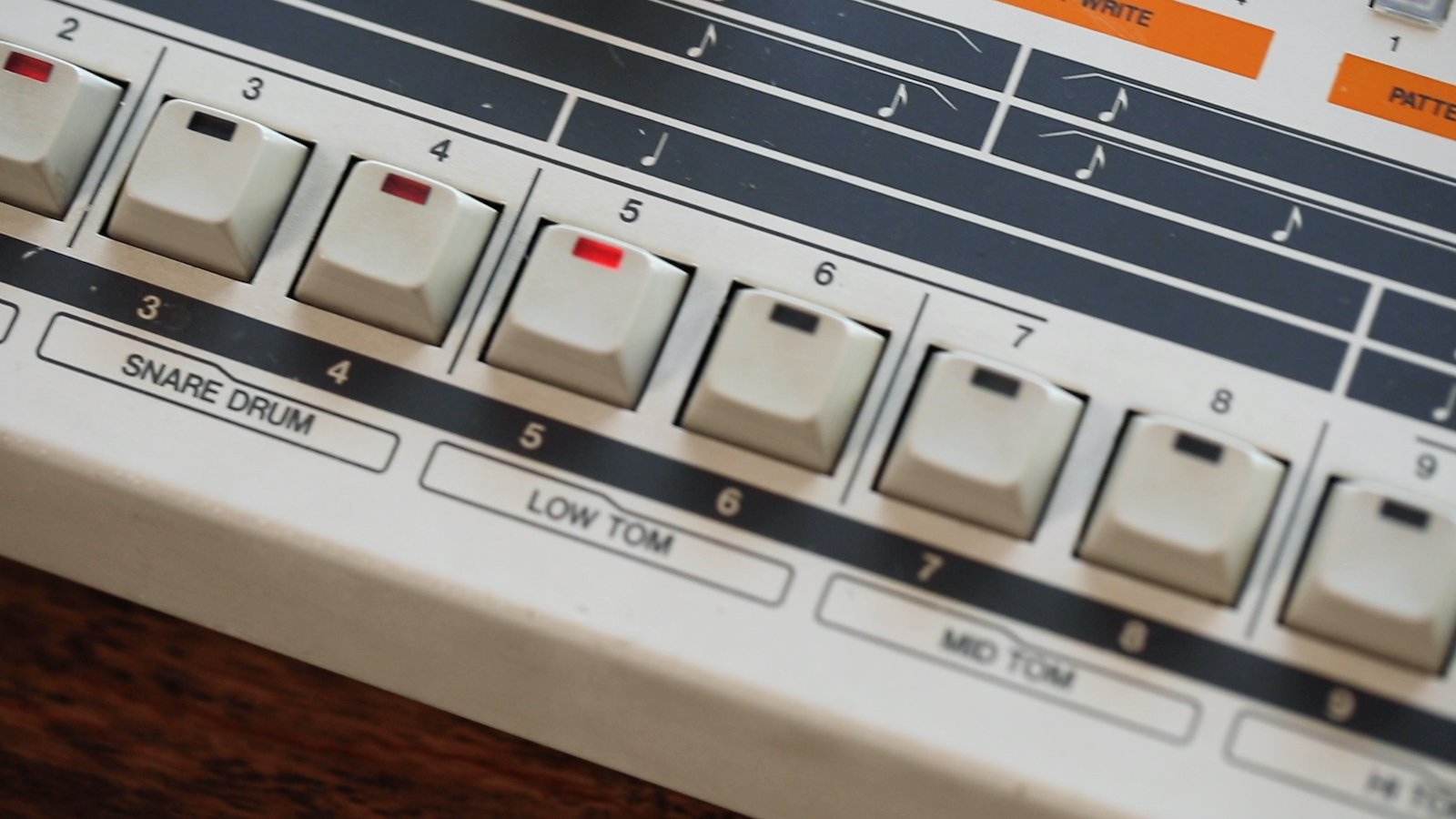
Whatever the details, house and techno cross-pollinated with the TR-909. But each used the instrument differently. Knuckles, as he explained to Red Bull Music Academy, would frequently tune the kick drum down to create more of a sub bass sound that could be “felt but not heard.”
Techno producers, on the other hand, stuck with a punchy kick that cut through every mix. The genre became known for its four-on-the-floor beat that placed a kick drum on every quarter note. These were alternated with the TR-909’s iconic open hi-hat, programmed with a short reverb. Techno’s backbone was born. Serviced with two different snare sounds, it was easy to tap in a rhythmic snare line. Add in the mechanical clap on the offbeat, and techno patterns got even more lively.
“When you’re talking about cultural shifts within music; what motherfuckers can’t afford or can afford is completely influential,” said Chicago producer Tyree Cooper to DJ Mag. “You talk about black music in general, hip-hop, house and techno, all these cultures sprang up in a simultaneous way. These machines were what we could afford, and they became the tools of the movement.”
Jeff Mills
No one mastered the TR-909 quite like Detroit native Jeff Mills, who plays the drum machine like an instrument. That Mills, a DJ and producer preoccupied with space, would worship the alien-sounding TR-909, is befitting. He has long DJed with a TR-909 in addition to turntables or CDJs, using the drum machine to create rhythms on the fly.
“Because of the stop/start function, you can manipulate it as if you’re playing a sample, and if you’re really good, almost as if you're a live drummer playing a drum kit,” Mills told MixMag. “You can tune and pot up the sound. If you work with that enough, you can get the feel of a live drummer by the way that you strike a drum and the way you pull back.”
In footage of his performances, Mills can be seen doing just this, altering the pitch and accent on each drum to infuse the mechanical object with the energy of a real drummer. His virtuosity on the machine has been well-documented in the Exhibitionist 2 DVD’s “TR-909 Workout,” which features Mills nimbly whirring the TR-909 into a club-ready frenzy.
Other Genres
But the TR-909 did not stop at techno. It dominated electronic music of the late 1980s, from Madonna and the Pet Shop Boys to more obscure artists. Among its seminal electronic tracks was the 1987 house classic Rhythim Is Rhythim’s “Strings Of Life,” produced by Derrick May. The TR-909 was combined with vocals in surprising ways, such as Inner City’s 1988 “Good Life,” which was produced by Kevin Saunderson. The song combined singer Paris Grey’s vocals with the TR-909’s drum programming, making for an irresistible dancefloor filler.
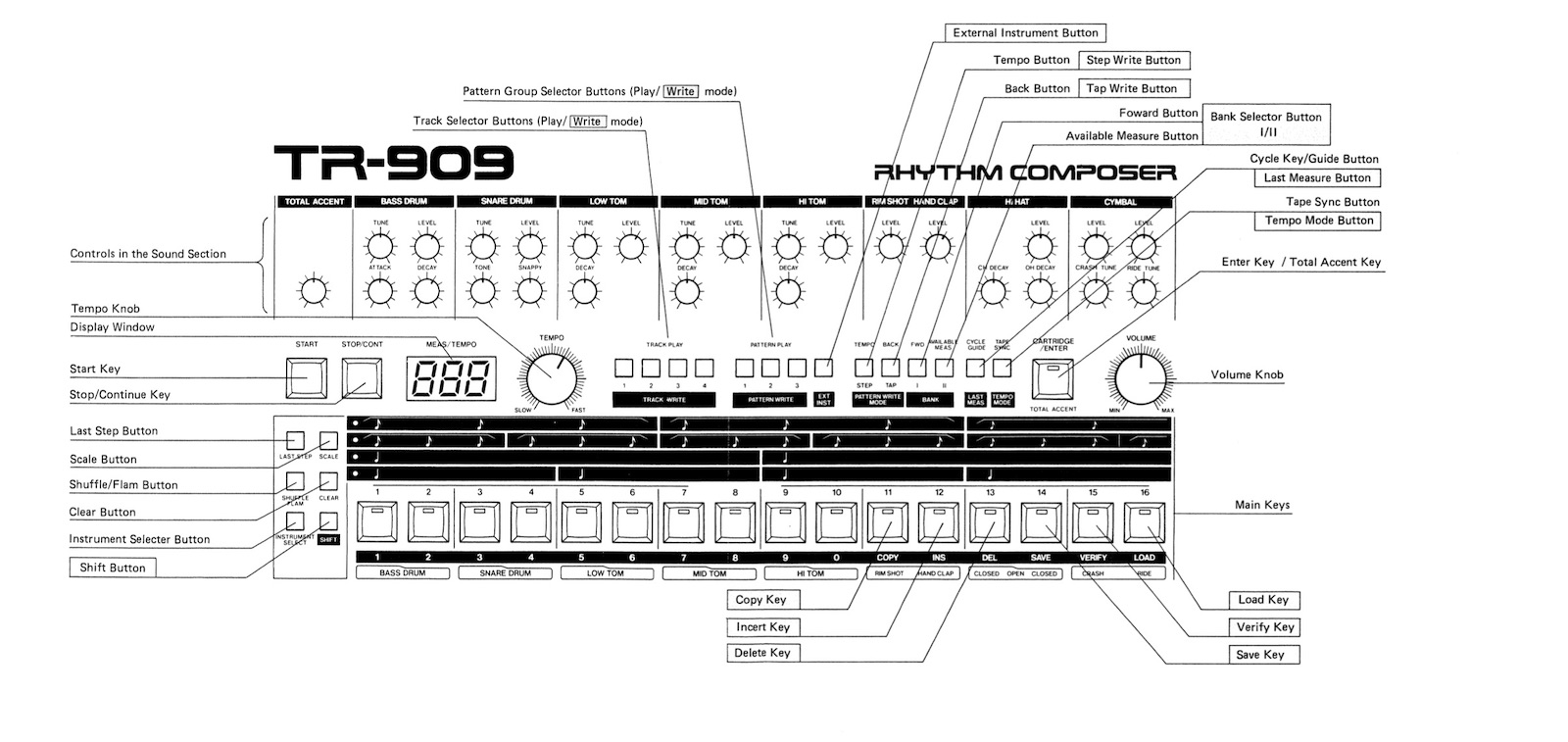
Though electro was largely driven by the rich, round kick drum of the TR-808, the TR-909 was also featured by artists including Mantronix and Just Ice. Hip-hop similarly favored the TR-808, but Ghostface Killah and Raekwon in particular took to the TR-909.
When electronic music hit the mainstream in the 1990s, its purveyors continued to take advantage of the TR-909. Robin S.’ 1993’s smash hit “Show Me Love” combined the TR-909 with Korg M1 organ preset to earworm effect. French duo Daft Punk’s 1997 chart-topper, “Around The World,” highlighted the TR-909’s clap and kick, with rich reverb and a vocoded voice. The examples continue, right up to this very day.
“I’m not really sure how dance music (especially house) could have ever evolved to this point without the TR-909,” said San Francisco house DJ and producer Andy Caldwell, who bought a TR-909 for $300 in 1993. “If you were to remove the signature 909 sound from every dance record made since 1983 and replace it with something else, something inferior, it would sound thin, cheap, muddy and well to be honest…. shitty.”
Roland TR-909 in the Present Day
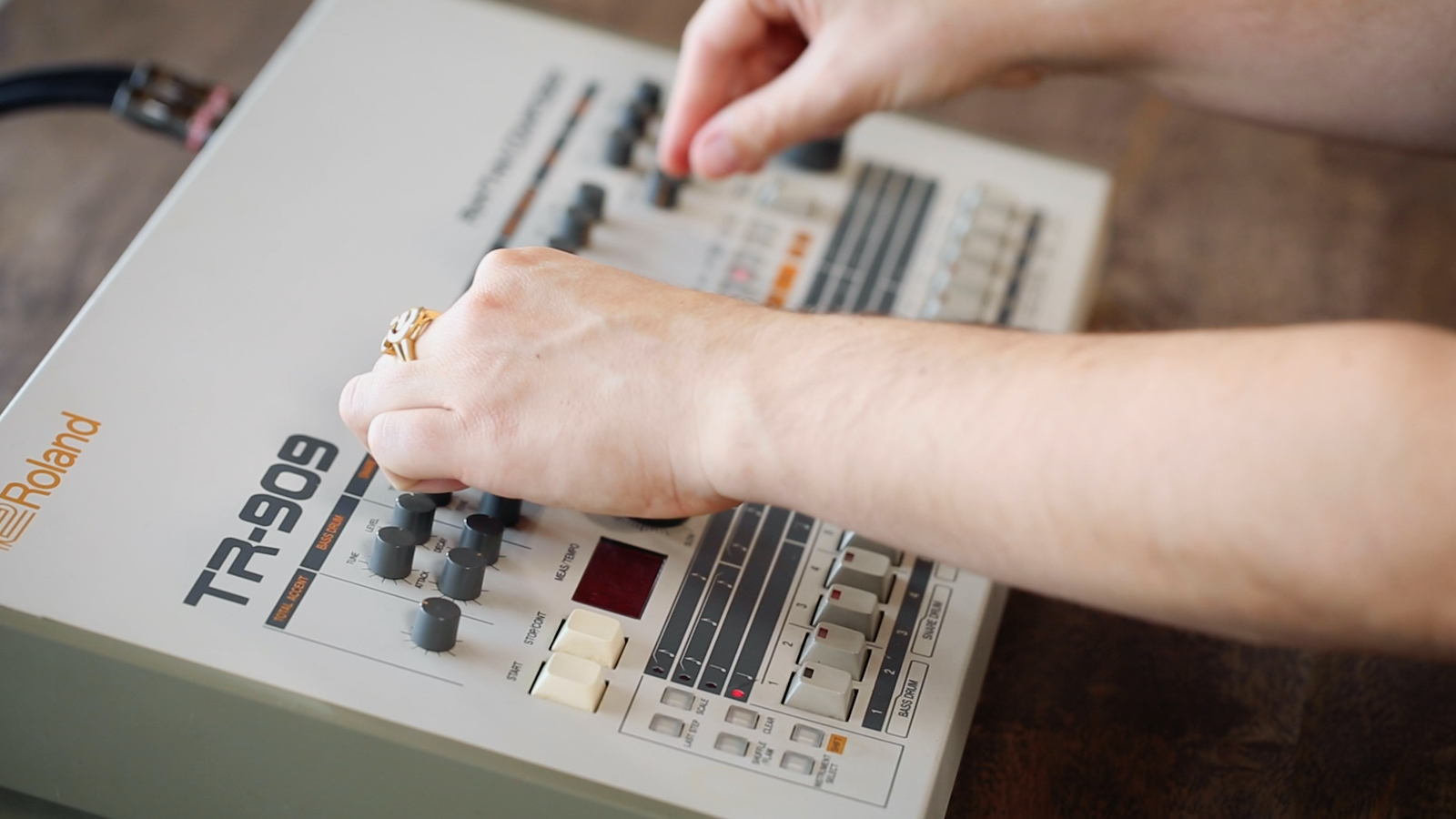
The persistent demand for the TR-909 has since driven up its price. Today, an original TR-909 could easily run you over $3,000. In reaction, Roland have re-upped the beatbox, releasing the AIRA TR-8 in 2014, a digital remake that combined the sounds of the TR-909 and TR-808 in one machine. In September 2016 came the TR-09, a small, analog reboot that recreated the TR-09 interface. Roland expanded upon its AIRA version with the TR-8S in 2018, which includes the ability to use the drum machine as a sampler. That same year, it also released the first official TR-909 plugins.
In the modular world, Tiptop have split the drums of the TR-909 into discrete modules, while Hexinverter (now defunct) has also made several series of modules inspired by 909 circuitry. More recently, Eurorack and MIDI controller company has introduced the S-909 module, a 4hp Eurorack module that offers the rimshot, handclap, closed hi-hat, open hi-hat, crash, and ride sounds from the 909 all in a single package.
In honor of 909 day, we’ve put together a playlist of some classic tracks the have made use of the TR-909. Enjoy!

